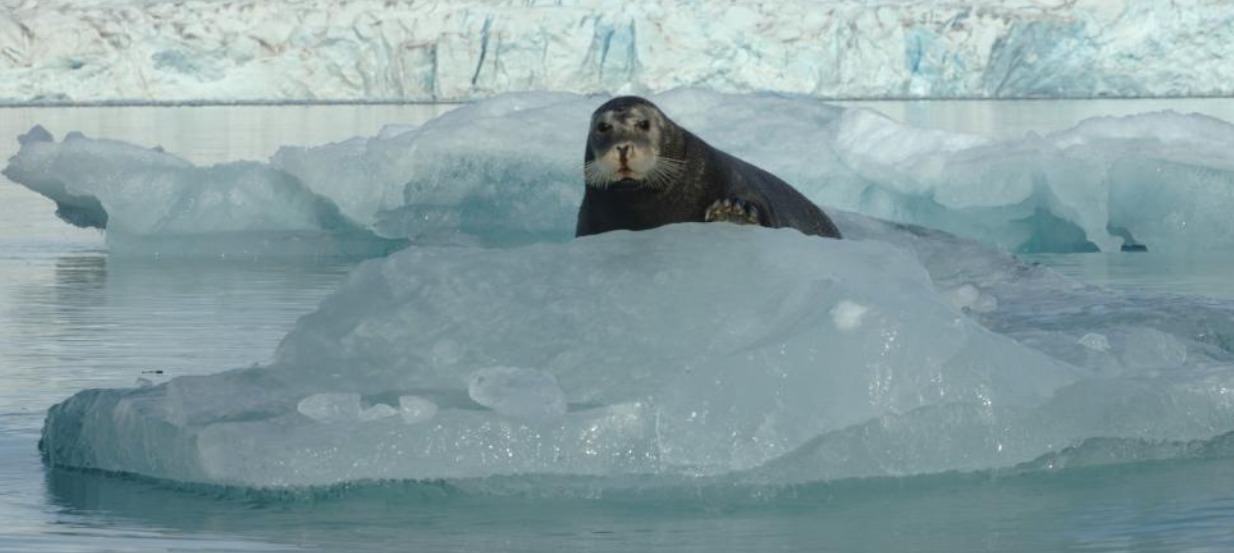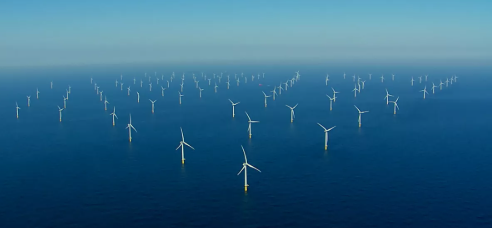Abu Dhabi, United Arab Emirates, 10 October 2025 (IUCN) – Three Arctic seal species are now close to extinction, according to the latest update of the IUCN Red List of Threatened Species™. Today’s update also reveals that more than half of the world’s bird species are declining, while global green turtle populations are rebounding thanks to conservation efforts.
The update was released today during the IUCN World Conservation Congress in Abu Dhabi. The IUCN Red List now includes 172,620 species, of which 48,646 are threatened with extinction.
« Today’s Red List update, launched at the IUCN Congress in Abu Dhabi, highlights both urgent challenges and powerful opportunities. While species like Arctic seals and many birds face growing threats, the recovery of the green turtle reminds us that conservation works when we act with determination and unity. As we prepare for the Climate COP in Belém, governments and communities have a crucial opportunity to accelerate actions to protect biodiversity, stabilize our climate, and build a future where people and nature thrive together, » said Dr. Grethel Aguilar, IUCN Director General.
Climate Change Pushes Arctic Seals Toward Extinction
The update shows that the hooded seal (Cystophora cristata) has moved from Vulnerable to Endangered, while the bearded seal (Erignathus barbatus) and the harp seal (Pagophilus groenlandicus) have shifted from Least Concern to Near Threatened.
The main threat to Arctic seals is sea ice loss caused by climate change. Arctic seals rely on sea ice for breeding, rearing pups, molting, resting, and accessing feeding areas. Thinning and disappearing sea ice also affect their feeding habits and make the Arctic more accessible to humans, further increasing overall risk to these species.
Warming in the Arctic occurs four times faster than in other regions, significantly reducing both the extent and duration of sea ice cover. This threatens all ice-dependent seals, walruses (Odobenus rosmarus), and other Arctic marine mammals, as well as ice-dependent seals in Antarctica and subpolar regions, such as the Caspian seal (Pusa caspica).
Ice-dependent seals are also a key food source for other animals, including polar bears and Indigenous communities across the Arctic. They play a central role in the trophic network by consuming fish and invertebrates and recycling nutrients, making them keystone species, meaning the health of the entire marine environment is linked to their survival.
« Every year in Svalbard, receding sea ice shows how threatened Arctic seals have become, making it harder for them to breed, rest, and feed. Their fate is a stark reminder that climate change is not a distant problem—it has been unfolding for decades with impacts here and now. Protecting Arctic seals goes beyond these species; it’s about preserving the delicate balance of the Arctic, which is essential for all of us, » said Dr. Kit Kovacs, Co-Chair of the IUCN Pinniped Specialist Group and Head of the Svalbard Program at the Norwegian Polar Institute.
Additional pressures on Arctic seals include shipping, noise, oil and mineral extraction, hunting, and bycatch in fisheries. Protecting key habitats from human activity, reducing bycatch, ensuring sustainable hunting, and minimizing noise impacts are essential steps to halt Arctic seal declines.
Deforestation Drives Global Bird Declines
This Red List update includes reassessments of 1,360 bird species and complements the eighth comprehensive assessment of all bird species worldwide by BirdLife International. With contributions from thousands of experts over nine years, 1,256 (11.5%) of 11,185 assessed bird species are globally threatened. Overall, 61% of bird species have declining populations—up from 44% in 2016.
The most common cause of bird population decline is habitat loss and degradation, primarily due to the expansion and intensification of agriculture and logging—the main threats to threatened bird species.
This update highlights Madagascar, West Africa, and Central America as regions where tropical forest loss poses a growing threat to birds. In Madagascar, 14 endemic forest bird species are now Near Threatened, and three are Vulnerable, including Schlegel’s Asity (Philepitta schlegeli), whose males display vibrant blue and green caruncles. In West Africa, five species are now Near Threatened, including the Black-casqued Hornbill (Ceratogymna atrata), which is also hunted and traded. In Central America, forest loss has pushed the Northern Nightingale-Wren (Microcerculus philomela) into the Near Threatened category.
« That three out of five bird species worldwide have declining populations shows how deep the biodiversity crisis has become and how urgently governments must act under various conventions and agreements, » said Dr. Ian Burfield, Global Species Science Coordinator for BirdLife and coordinator of the IUCN Red List Authority for Birds.
Birds play essential roles in ecosystems and for humans as pollinators, seed dispersers, pest controllers, scavengers, and ecosystem engineers. For example, hornbills can disperse up to 12,700 large seeds per km² daily, supporting ecosystem functioning and carbon storage in tropical forests. However, agriculture, logging, invasive species, hunting, trapping, and climate change continue to pose major threats to birds globally.
Green Turtles Rebound Thanks to Global Conservation
The conservation status of the green turtle (Chelonia mydas) has moved from Endangered to Least Concern, thanks to decades of sustained conservation efforts. Found in tropical and subtropical waters worldwide, global green turtle populations have increased by approximately 28% since the 1970s, despite ongoing threats to some subpopulations.
Green turtles are keystone species in tropical marine ecosystems such as seagrass beds and coral reefs and have held cultural, culinary, spiritual, and recreational significance for humans for millennia.
Conservation efforts have focused on protecting nesting females and eggs on beaches, expanding community initiatives to reduce unsustainable harvesting of turtles and eggs, reducing trade, and implementing turtle exclusion devices and other measures to reduce bycatch. Efforts in Ascension Island, Brazil, Mexico, and Hawaii have been particularly successful, with some subpopulations rebounding close to pre-commercial exploitation levels.
Despite these gains, green turtles remain far below pre-European colonization abundance, and unsustainable use, bycatch, and habitat destruction continue to threaten them. Climate change also affects nesting habitats, with notable impacts on the Southwest Pacific population, home to the largest nesting colony on Raine Island, Australia, where multiple years of declining hatchling production remain a major concern.
« The ongoing global recovery of green turtles is a powerful example of what coordinated, decades-long conservation can achieve to stabilize and even restore long-lived marine species. Such approaches must focus not only on turtles but also on maintaining healthy habitats and intact ecological functions. Sea turtles cannot survive without healthy oceans and coasts—and neither can humans. Sustained conservation efforts are essential to ensure the continuation of this recovery, » said Roderic Mast, Co-Chair of the IUCN Marine Turtle Specialist Group.
Extinctions
This update also sees six species move to the Extinct category, including the Christmas Island shrew (Crocidura trichura) and a cone snail (Conus lugubris), both extinct since the late 1980s; the Slender-billed Curlew (Numenius tenuirostris), last observed in Morocco in 1995; and Diospyros angulata, a species of ebony-like tree last seen in the early 1850s.
Three Australian mammals—the Western Barred Bandicoot (Perameles myosuros), the South-eastern Striped Bandicoot (Perameles notina), and the Nullarbor Barred Bandicoot (Perameles papillon)—as well as Delissea sinuata, a plant native to the Hawaiian Islands, are newly assessed and listed as extinct on the Red List.




